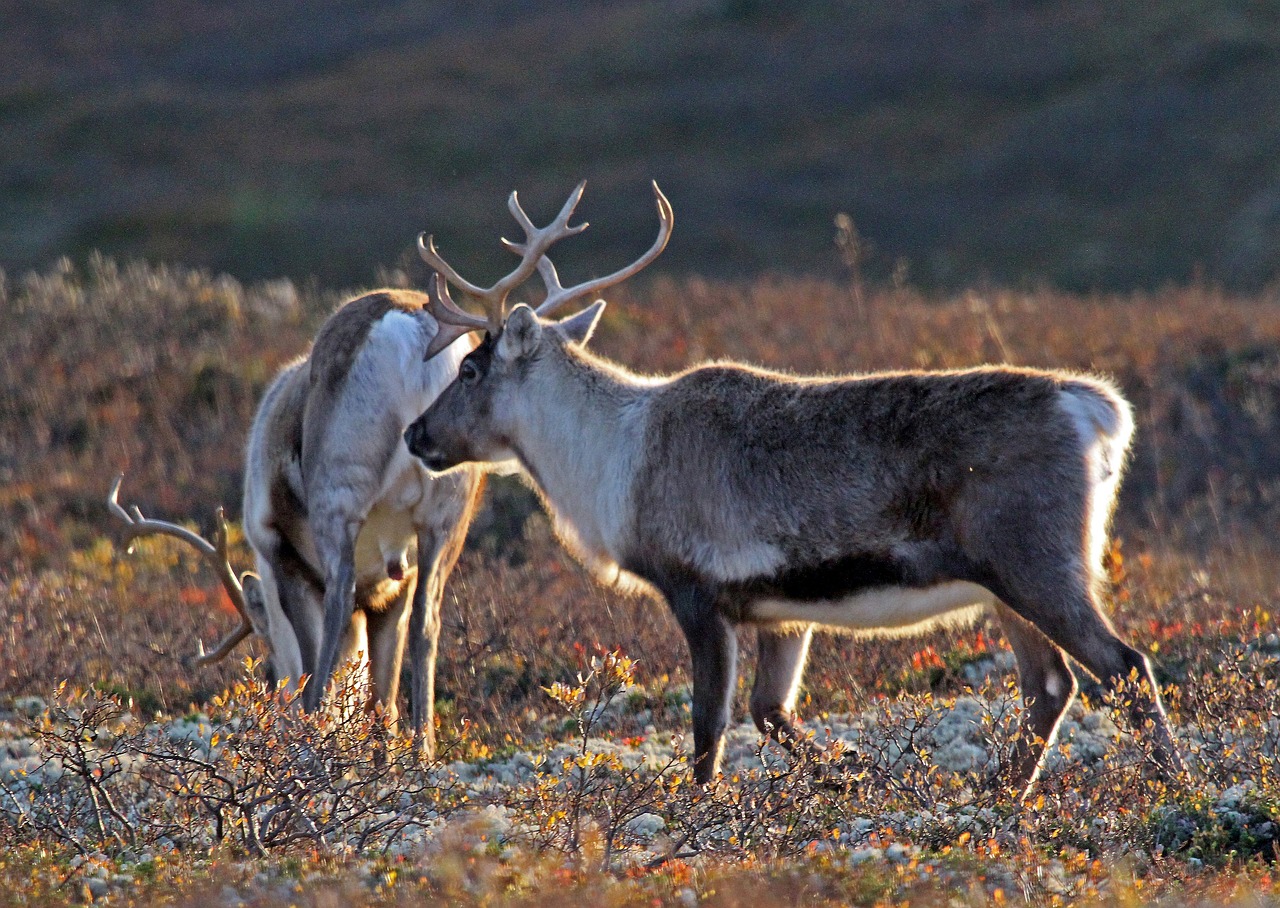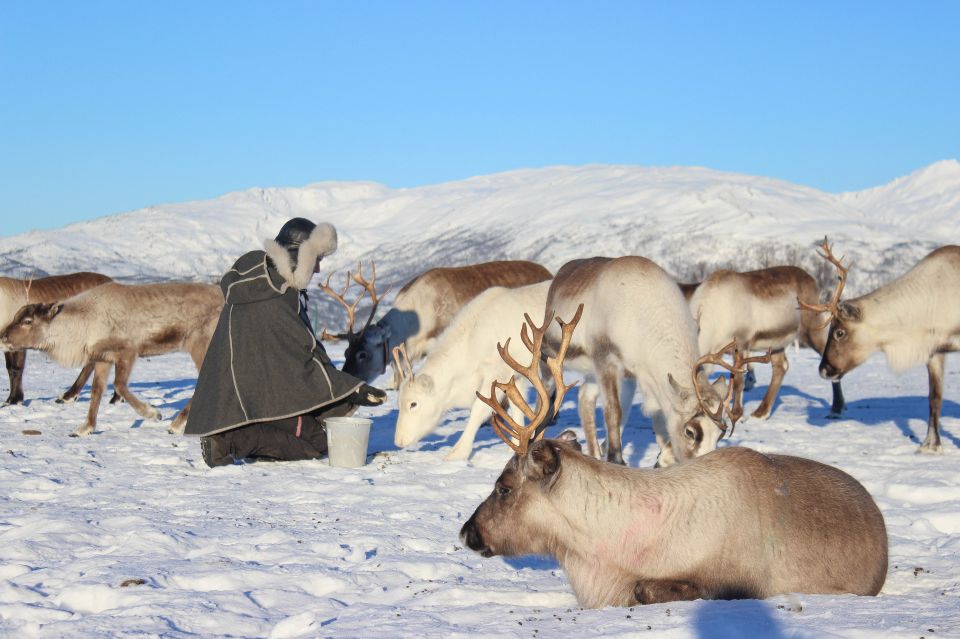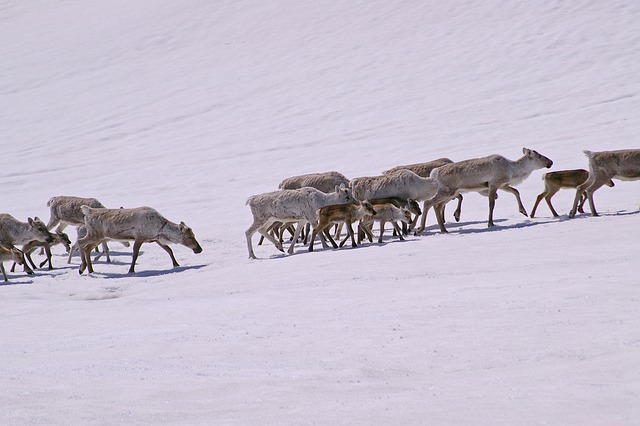Facts about Norwegian Reindeer
Get ready to embark on a thrilling adventure as we journey into the captivating realm of Norway’s iconic reindeer!
From the rugged mountains of Trøndelag to the expansive plateaus of Hardangervidda, we’ll be exploring the breathtaking landscapes that serve as the backdrop for the fascinating lives of these magnificent creatures.
We’ll dive deep into the lives of Norwegian reindeer, uncovering their habitats, behaviors, diets, and the tireless efforts dedicated to their conservation. Here you can learn more about the rol of reindeer in the Sami culture.
Join us as we unravel the mysteries of reindeer herds, discover the enchanting rituals of the breeding season, and delve into the seasonal variations in their diet – from feasting on lush summer greens to navigating snowy winter landscapes.

Geographic Range
In mainland Norway, wild reindeer live in the tall mountains south of Trøndelag. They’re different from the domestic reindeer you find elsewhere in the country. On Svalbard, an Arctic group of islands, there’s another kind of reindeer called the Svalbard reindeer. They’re smaller and have adapted to the area’s unique conditions.
These wild reindeer are wanderers. They travel long distances between where they eat and where they have their babies. They’re always moving, going back and forth across the rough land.
They have a clever trick: they prefer to walk into the wind. This helps them smell any danger nearby and find their way around easily.
Domestic Vs. Wild Reindeer
Norway is home to both wild and domestic reindeer populations, each with its own distinct characteristics and habitats.
Wild Reindeer
Norway boasts several populations of wild reindeer, with the largest concentration residing in the expansive plateau of Hardangervidda. Here, approximately 10,000 wild reindeer roam freely, embodying the untamed spirit of the Norwegian wilderness.
Overall, the country hosts around 25,000 wild reindeer across various regions.
Domestic Reindeer
In contrast, the number of domestic reindeer far surpasses that of their wild counterparts. With approximately 250,000 domestic reindeer spread throughout the country, Norway boasts a significant domestic reindeer population.
The majority of these domestic reindeer, totaling 185,000 individuals, can be found in Finnmark, a region renowned for its rich reindeer herding traditions.

Social Behavior
Reindeer are social animals, often living in herds for protection against predators. These herds can range from a few dozen to several hundred individuals, ensuring safety in numbers.
Male and Female Herds
Reindeer form two distinct herds: the male herd and the female herd. The male herd consists of adult bulls, who stick together outside the breeding season. Meanwhile, the female herd comprises cows, calves, and young animals. During the breeding season, known as the rut, the herds come together. This is a time of fierce competition among the bulls, who vie for the attention of the females by showcasing their antlers and engaging in territorial battles.
Antlers and Social Hierarchy
In the reindeer world, antlers play a crucial role in determining social status. Bulls boast impressive antlers during the rut, using them to assert dominance and secure mating opportunities. However, once the breeding season ends, the antlers are shed, and bulls with smaller antlers may find themselves at the bottom of the social hierarchy. This ensures that pregnant cows receive priority access to the best grazing areas during the winter months, ensuring sufficient sustenance for their developing calves.
Calving Season
Calves are typically born in May after the cows migrate to specific calving areas. The calving process is swift, with calves up on their feet within minutes of birth. The herd remains in the calving area for a few days until the calves are strong enough to join their mothers in search of new grazing grounds.

Diet
Reindeer have distinct dietary strategies to cope with the extreme seasonal changes in their environment. In late spring and summer, when food is abundant and rich in protein and energy but low in fiber, reindeer thrive on a varied diet of leaves, buds, forbs, shrubs, and grasses.
The long days and ample light trigger hormonal changes that increase their appetite and feed intake, allowing them to make the most of the nutrient-rich vegetation. However, as summer transitions to autumn, the fiber content in their diet increases while energy and protein levels decline.
Reindeer then shift their focus to browsing, selectively feeding on the most nutritious plants and plant parts to meet their nutritional needs.
During late autumn and the onset of winter, reindeer rely heavily on lichen as a primary food source. Despite its high soluble carbohydrate content, lichen is notably low in protein and can be challenging to find due to snow cover, requiring reindeer to expend energy digging for their sustenance.
This dietary adaptation allows reindeer to survive the lean winter months, although their energy intake and foraging time decrease compared to the more abundant summer season.
Conservation
In the rugged landscapes of Norway, the future of reindeer is intricately tied to conservation efforts aimed at preserving their habitats and ensuring their survival in the face of mounting challenges. Climate warming poses a significant threat to reindeer populations, altering access to food, migration patterns, and exacerbating problems caused by insects.
These changes directly impact the condition, fertility, and survival rates of reindeer, with uncertain implications for population levels and ecosystem dynamics. Despite potential increases in summer food availability due to warmer climates, reduced access to winter food sources, caused by heavier snowfall and ice-crusted terrain, presents significant challenges.
Reindeer adapt their grazing areas based on snow and grazing conditions, but limited migration routes in Norway due to fragmented grazing areas restrict their ability to adjust to rapid environmental changes. With extremely limited options for adaptation, the survival of this indigenous animal is at risk.
Collaborative conservation efforts are essential to mitigate the impacts of climate change on Norwegian reindeer. Protecting and restoring crucial habitats, implementing sustainable land management practices, and minimizing human-wildlife conflicts are vital steps towards ensuring the long-term survival of reindeer populations.
By working together to address these threats, we can secure a brighter future for Norwegian reindeer and the ecosystems they inhabit!
